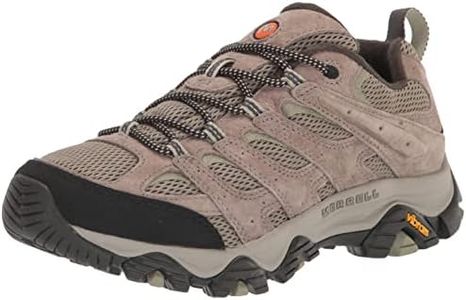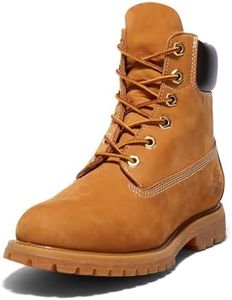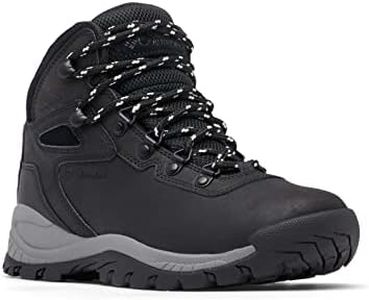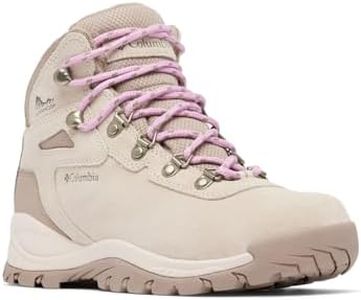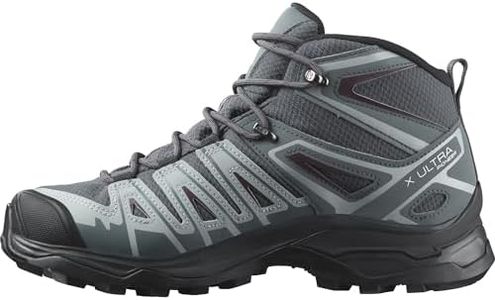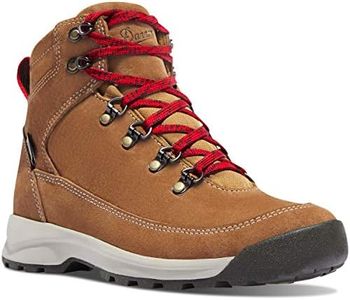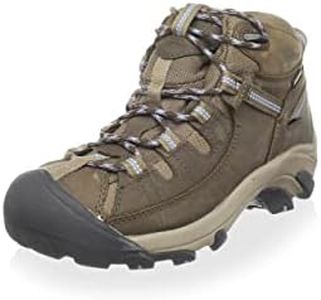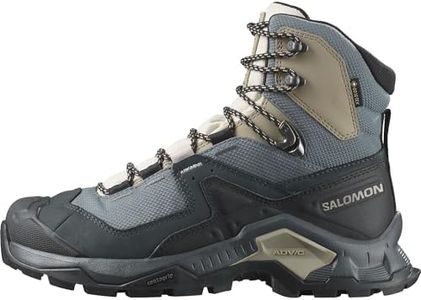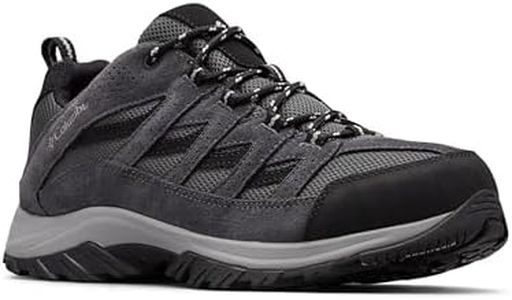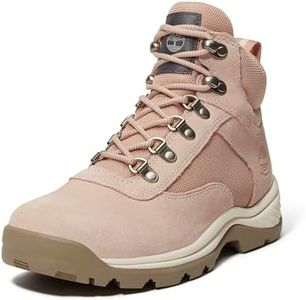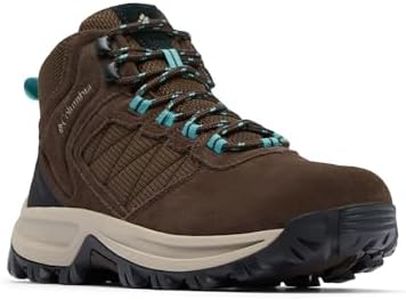We Use CookiesWe use cookies to enhance the security, performance,
functionality and for analytical and promotional activities. By continuing to browse this site you
are agreeing to our privacy policy
10 Best Hiking Boots For Women
From leading brands and best sellers available on the web.Buying Guide for the Best Hiking Boots For Women
When choosing hiking boots for women, it’s important to focus on comfort, support, and the kind of hiking you plan to do. The right pair can make all the difference, helping you avoid blisters, foot pain, and fatigue during long hikes. Always try on boots in the afternoon (when feet are slightly swollen), wear the kind of socks you’ll hike in, and consider the terrain and weather where you’ll be hiking. Don't rush the process—walk around in them inside the store if you can, and pay attention to how they feel from the start.Fit and SizingFit refers to how well the boots match the shape and size of your feet. This is perhaps the most important factor, as ill-fitting boots can cause discomfort and blisters. Women’s hiking boots are often designed with a narrower heel and more room in the toe box, but every brand fits a little differently. Always try boots with your hiking socks, making sure there’s about a thumb’s width of space at the end of your toes. If you have wider feet or common foot issues, look for brands or models that offer wide sizing.
Boot HeightBoot height refers to how high the boot goes up your ankle or calf. Low-cut boots are lighter and cooler, ideal for light day hikes on well-maintained paths. Mid-cut boots offer more ankle support without being as heavy, suiting rougher trails and moderate loads. High-cut boots provide the most support and protection from debris or ankle twists, making them better for challenging trails and carrying heavier packs. Choose the height based on the difficulty of your hikes, the weight you carry, and your personal preference for support.
MaterialThe material of hiking boots affects comfort, durability, breathability, and waterproofing. Leather is known for durability and water resistance but is heavier and may need more time to break in. Synthetic materials (like nylon or polyester) are lighter and dry faster but may wear out sooner. For wet conditions, waterproof linings like Gore-Tex help keep feet dry, but they may feel warmer. Choose materials based on your typical climate: breathability for dry areas, waterproof for wet environments, and consider it will influence the weight and feel of the boot.
WeightThe weight of hiking boots determines how much energy you’ll expend during a hike. Lightweight boots are easier to walk with and great for day hikes or easy terrain. Heavier boots, which often come with more support and protection, are better suited for rough, rocky, or uneven terrain where stability is crucial. Think about how far and how often you’ll hike, and the trade-off between extra support versus lighter steps.
Sole and TractionThe sole, especially the outsole, affects grip and traction on different surfaces. Look for deep lugs and sticky rubber if you plan to hike on muddy, rocky, or slippery paths. Flatter soles are sufficient for well-groomed or dry trails. A stiffer sole gives more support on uneven terrain but can feel less flexible. Match the level of sole rigidity and traction with the types of trail you expect—rougher, steeper, and wetter trails need stronger grip and stiffer soles.
Waterproofing and BreathabilityMany hiking boots come with waterproof membranes to keep feet dry in rain, snow, or on wet trails, but these can also trap heat, making boots hotter in warm weather. Non-waterproof boots or those with mesh panels are more breathable and stay cooler but won’t protect as well from water. Decide whether you’re hiking mostly in dry, hot weather or in wet, unpredictable conditions; this will help you choose between maximum water protection or greater breathability.
Support and CushioningSupport comes from the midsole and the structure of the boot, helping absorb shock and keep your feet stable on uneven ground. Cushioning adds comfort and can prevent foot fatigue, especially on long hikes. Softer midsoles are more comfortable for day trips, while firmer ones add protection and are better for carrying heavier packs. Consider your hiking style, pack weight, and how much underfoot comfort you desire.
